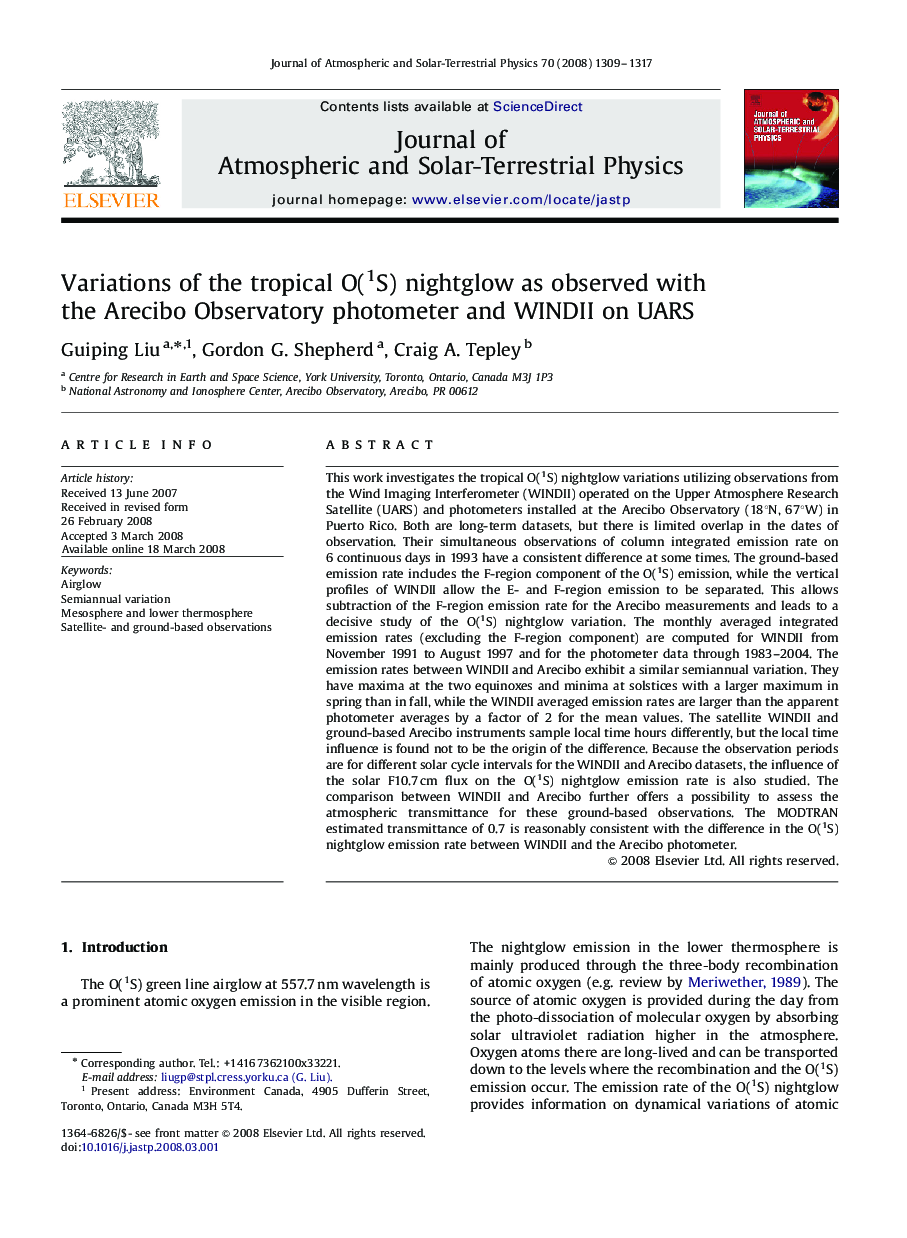| Article ID | Journal | Published Year | Pages | File Type |
|---|---|---|---|---|
| 1777864 | Journal of Atmospheric and Solar-Terrestrial Physics | 2008 | 9 Pages |
Abstract
This work investigates the tropical O(1S) nightglow variations utilizing observations from the Wind Imaging Interferometer (WINDII) operated on the Upper Atmosphere Research Satellite (UARS) and photometers installed at the Arecibo Observatory (18°N, 67°W) in Puerto Rico. Both are long-term datasets, but there is limited overlap in the dates of observation. Their simultaneous observations of column integrated emission rate on 6 continuous days in 1993 have a consistent difference at some times. The ground-based emission rate includes the F-region component of the O(1S) emission, while the vertical profiles of WINDII allow the E- and F-region emission to be separated. This allows subtraction of the F-region emission rate for the Arecibo measurements and leads to a decisive study of the O(1S) nightglow variation. The monthly averaged integrated emission rates (excluding the F-region component) are computed for WINDII from November 1991 to August 1997 and for the photometer data through 1983-2004. The emission rates between WINDII and Arecibo exhibit a similar semiannual variation. They have maxima at the two equinoxes and minima at solstices with a larger maximum in spring than in fall, while the WINDII averaged emission rates are larger than the apparent photometer averages by a factor of 2 for the mean values. The satellite WINDII and ground-based Arecibo instruments sample local time hours differently, but the local time influence is found not to be the origin of the difference. Because the observation periods are for different solar cycle intervals for the WINDII and Arecibo datasets, the influence of the solar F10.7 cm flux on the O(1S) nightglow emission rate is also studied. The comparison between WINDII and Arecibo further offers a possibility to assess the atmospheric transmittance for these ground-based observations. The MODTRAN estimated transmittance of 0.7 is reasonably consistent with the difference in the O(1S) nightglow emission rate between WINDII and the Arecibo photometer.
Related Topics
Physical Sciences and Engineering
Earth and Planetary Sciences
Geophysics
Authors
Guiping Liu, Gordon G. Shepherd, Craig A. Tepley,
